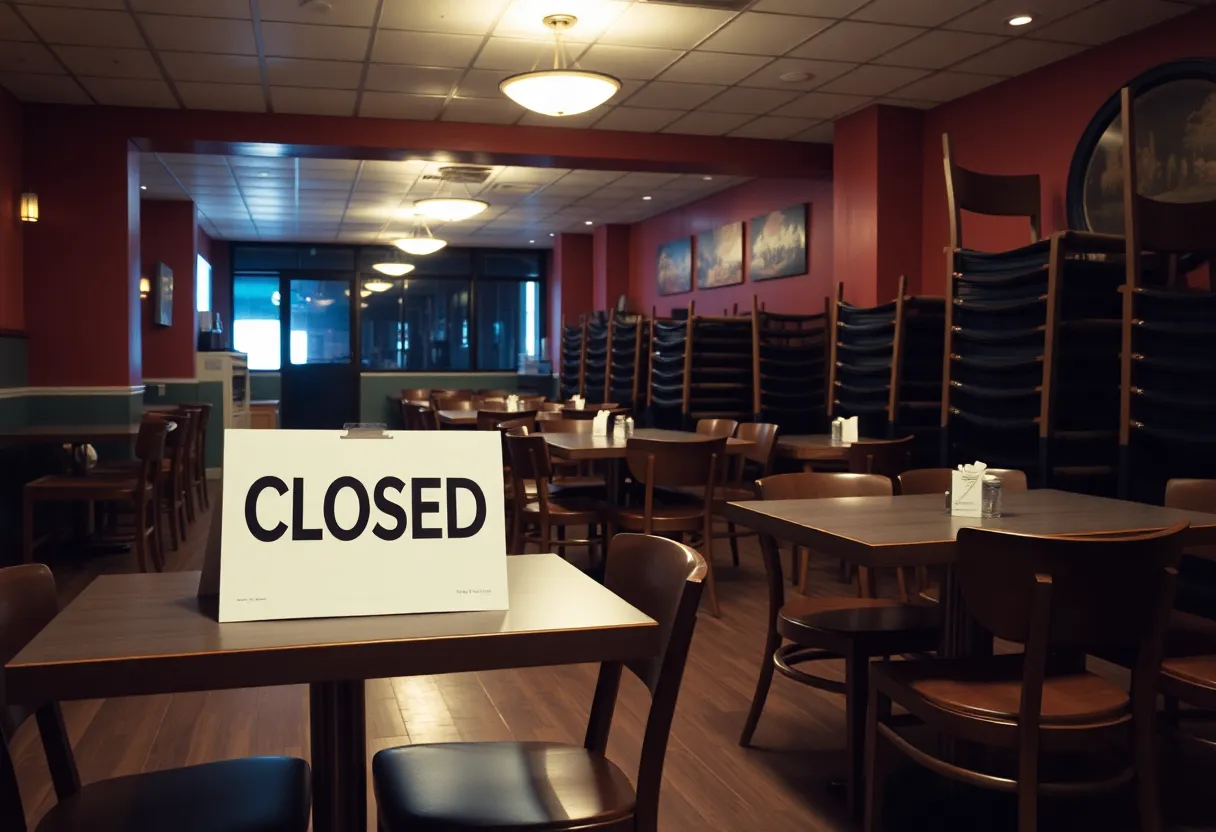News Summary
New York City is experiencing a notable decline in its financial sector as finance jobs increasingly move to states such as Texas and Florida. Reports reveal that JPMorgan Chase now employs more workers in Texas than in New York City, underscoring a trend that threatens the city’s status as a leading financial hub. Concerns are rising over job losses, competitive tax rates, and the overall business climate, as the city grapples with high inflation and housing affordability issues. This shift raises questions about New York City’s future in the financial services landscape.
New York City is witnessing a significant decline in its financial sector, as a growing number of finance jobs migrate to states like Texas and Florida. Recent reports indicate that JPMorgan Chase, one of the largest banks in the nation, has now employed more workers in Texas than in New York City, contributing to a broader trend that sees Texas boasting more bank employees overall than the city.
The Partnership for New York City chief has voiced concerns over this dramatic shift, describing it as “scary.” The finance job exodus has not only impacted Texas but has also seen relocations to states like Florida and North Carolina, signaling a potential loss of New York City’s status as the financial services capital of the U.S. and possibly the world.
This decline is not a recent phenomenon; the deterioration in New York’s financial sector began prior to significant events such as the COVID-19 pandemic and the September 11 attacks. From January to August 2024 alone, New York City’s financial services sector contracted by 8,400 jobs. Even so, the financial services industry remains a vital component of the city’s tax revenue, despite these ongoing job losses.
Historically, New York has seen a stark decrease in its share of Fortune 500 firms, plummeting from 128 firms in 1965 to approximately 50 today. In comparison, Texas has 54 and Florida has 22 Fortune 500 firms headquartered within their borders. This shift has raised alarms about the state government’s increasing hostility towards businesses, led by New York Governor Kathy Hochul, who, despite claims to improve the business climate, has faced criticism for actions that are perceived as adverse to business interests.
New York State is also looking at significant budget deficits beginning next year, prompting discussions on potential tax hikes to meet financial demands. Observers note that a reconsideration of tax rates and the state’s perceived climate ambitions is essential for the city to remain competitive in attracting businesses and jobs.
The political landscape is changing as well, epitomized by Hochul’s support for mayoral candidate Zohran Mamdani, whose policies aim to raise taxes on corporations and high earners. In the backdrop of these rising tax burdens, New York is experiencing a peculiar economic contradiction; the number of ultra-wealthy residents—those earning seven figures—has increased by 11% from 2019 to 2022.
Alongside these shifts, the city is grappling with rising inflation rates that surpass the national average. Unemployment in New York City stood at 5.2% in 2024, reflecting an increase from the 4% rate in 2019. The fallout from the COVID-19 pandemic was profound; nearly 1 million jobs were lost in early 2020, and the city saw over 46,000 deaths attributed to the virus. Compounding these challenges, drug overdose deaths have more than doubled since the pandemic.
Housing affordability remains a pressing issue, as the median home sale price has escalated significantly, further straining residents’ financial capabilities. This economic struggle is echoed in other areas, such as a noted rise in petty theft incidents, particularly in pharmacies. Even though tax revenues in New York City have increased by 21% since 2019—largely due to higher home values and inflation—the long-term picture remains concerning.
The population dip experienced during the pandemic appears to be partially offset by an influx of migrants; however, public school enrollment has yet to return to pre-pandemic levels. Consequently, many New Yorkers with young children are choosing to leave the city in search of more affordable living conditions and childcare opportunities.
In conclusion, New York City stands at a critical juncture, facing significant economic challenges as jobs and businesses move away, while it attempts to maintain its identity and viability as a leading financial hub.
Deeper Dive: News & Info About This Topic
- New York Post: With Wall Street Jobs Fleeing New York
- Times Union: Shifting New York
- Bloomberg: 2025 NYC Statistics
- Newsweek: New York Reverses Population Losses
- New York Times: Trump and the Federal Workforce
- Wikipedia: New York City
- Google Search: New York City financial sector
- Encyclopedia Britannica: New York City
- Google News: New York City economy

Author: STAFF HERE NEW YORK WRITER
The NEW YORK STAFF WRITER represents the experienced team at HERENewYork.com, your go-to source for actionable local news and information in New York, the five boroughs, and beyond. Specializing in "news you can use," we cover essential topics like product reviews for personal and business needs, local business directories, politics, real estate trends, neighborhood insights, and state news affecting the area—with deep expertise drawn from years of dedicated reporting and strong community input, including local press releases and business updates. We deliver top reporting on high-value events such as New York Fashion Week, Macy's Thanksgiving Day Parade, and Tribeca Film Festival. Our coverage extends to key organizations like the Greater New York Chamber of Commerce and United Way of New York, plus leading businesses in finance and media that power the local economy such as JPMorgan Chase, Goldman Sachs, and Bloomberg. As part of the broader HERE network, including HEREBuffalo.com, we provide comprehensive, credible insights into New York's dynamic landscape.





